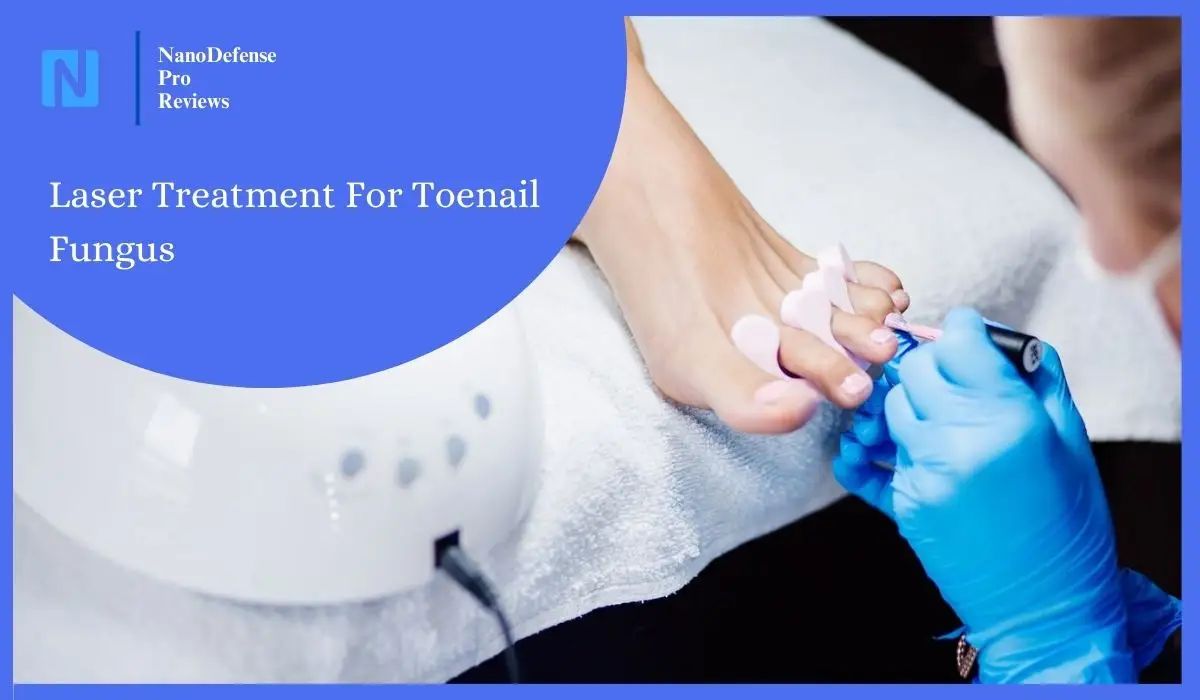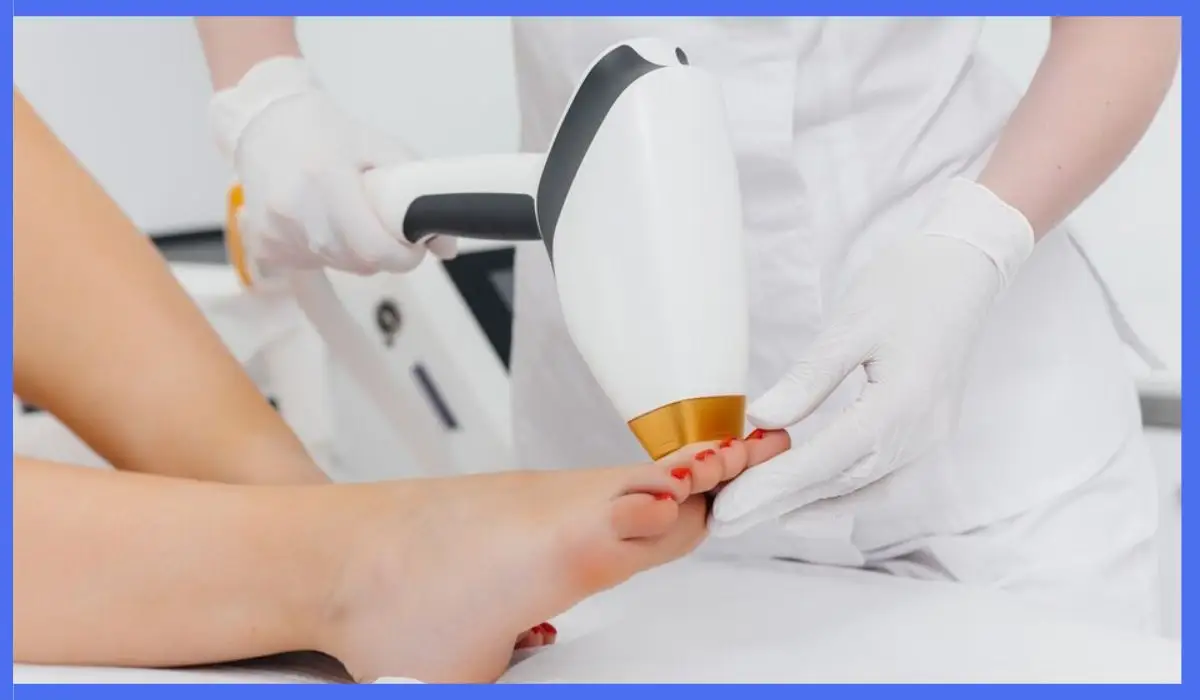Laser Treatment For Toenail Fungus: Is It Effective?
Explore the effectiveness of laser treatment for toenail fungus in our comprehensive guide. Discover how this innovative therapy tackles stubborn fungal infections with precision and minimal discomfort. We delve into the science behind laser treatment, its benefits, and potential considerations. Whether you’re considering laser therapy or seeking alternative solutions, arm yourself with the knowledge to make informed decisions about addressing toenail fungus effectively.

Disclaimer: This article has been generated with the assistance of AI tools. While our research team has fact-checked the content, readers should independently verify information for accuracy and reliability.
Toenail fungus, also known as onychomycosis, is a common and persistent condition that can cause discoloration, thickening, and crumbling of the toenails. While various treatment options are available, including oral and topical antifungal medications, some patients seek alternative therapies like laser treatment. But does this innovative approach truly offer an effective solution for stubborn toenail fungus? Let’s explore the facts and separate myth from reality.
Can Laser Therapy Zap Away Toenail Fungus For Good?

The idea of using laser therapy to treat toenail fungus is intriguing. This non-invasive procedure involves directing precisely focused beams of high-intensity light at the infected toenail. The laser energy is designed to penetrate through the nail and reach the underlying fungal infection, to eradicate it.
Proponents of laser therapy claim that the concentrated light can effectively kill the fungus without causing harm to the surrounding healthy tissue. Additionally, they argue that the procedure is painless, requires no downtime, and eliminates the need for oral medications, which can have potential side effects.
Is Laser Treatment The Silver Bullet For Stubborn Toenail Fungus?
While the concept of laser therapy for toenail fungus sounds promising, it’s important to approach it with a critical eye. Like any medical treatment, its effectiveness can vary depending on various factors, and it may not be a one-size-fits-all solution.
Toenail fungus can be notoriously difficult to treat, as the fungi can penetrate deep into the nail bed and surrounding tissues. Oral antifungal medications, which work systemically, are often considered the most effective treatment option because they can reach the root of the infection. However, these medications may not be suitable for everyone due to potential side effects or interactions with other medications.
How Effective Is Laser Therapy In Combatting Toenail Fungus?
The effectiveness of laser therapy for toenail fungus has been a subject of debate in the medical community. While some studies have reported promising results, others have found the treatment to be less effective than traditional antifungal medications.
One study published in the Journal of the American Podiatric Medical Association in 2017 found that laser therapy was effective in clearing or significantly improving toenail fungus in approximately 70% of patients after one year of follow-up. However, the study also noted that the treatment was less effective in cases of severe or long-standing infections.
Another study published in the Journal of Cosmetic and Laser Therapy in 2016 reported a lower success rate, with only 48% of patients showing complete clearance of their toenail fungus after laser treatment.
Effectiveness Of Laser Treatment For Toenail Fungus: What You Need To Know?
When considering laser treatment for toenail fungus, it’s essential to understand that the effectiveness of this approach can be influenced by various factors, including:
- Type and severity of the fungal infection
- Duration of the infection
- The patient’s overall health and immune system function
- Technique and expertise of the practitioner performing the laser treatment
Furthermore, it’s crucial to have realistic expectations regarding the outcome. While laser therapy may be effective in some cases, it may not completely eliminate the fungus in others, especially in severe or long-standing infections. In such cases, a combination of laser treatment and oral or topical antifungal medications may be recommended for optimal results.
Laser Treatment For Toenail Fungus: Separating Fact From Fiction
As with any medical treatment, it’s important to separate facts from fiction when it comes to laser therapy for toenail fungus. Here are some common myths and misconceptions, along with the facts:
Myth: Laser treatment is a guaranteed cure for toenail fungus.
Fact: While laser therapy can be effective in some cases, it is not a guaranteed cure, and results may vary depending on various factors.
Myth: Laser treatment is entirely painless.
Fact: While generally well-tolerated, some patients may experience mild discomfort or a warm sensation during the procedure.
Myth: Laser therapy can prevent future fungal infections.
Fact: Laser treatment does not provide long-term protection against future toenail fungus infections. Proper foot hygiene and preventive measures are still necessary.
Final Verdict
Laser treatment for toenail fungus can be an effective alternative or complementary therapy for some patients, particularly those who cannot tolerate or have not responded well to oral antifungal medications. However, its effectiveness can vary depending on factors such as the severity and duration of the infection, as well as the patient’s overall health.
If you are considering laser treatment for toenail fungus, it’s essential to consult with a qualified healthcare professional, such as a podiatrist or dermatologist, who can assess your specific case and provide personalized guidance. They can advise you on the potential benefits, risks, and limitations of laser therapy, as well as recommend the most appropriate course of treatment based on your individual circumstances.
Remember, while laser treatment may offer a promising alternative for some patients, it should not be regarded as a one-size-fits-all solution or a guaranteed cure for toenail fungus. A combination of different treatment approaches, along with proper foot hygiene and preventive measures, may be necessary to effectively combat this persistent and stubborn condition.

Lisa Miller
Dr. Lisa Miller is a board-certified Dermatologist with over 15 years of experience treating a wide range of skin, hair, and nail conditions. She received her medical degree from the prestigious Columbia University College of Physicians and Surgeons and completed her dermatology residency at the University of California, San Francisco, one of the top dermatology training programs in the country. Dr. Miller is an active member of the American Academy of Dermatology and has authored numerous peer-reviewed articles and book chapters on the latest advancements in dermatological care. She is frequently invited to speak at national and international medical conferences, sharing her expertise with other clinicians. In her private practice, Dr. Miller takes a patient-centered approach, collaborating closely with each individual to develop customized treatment plans. She is passionate about empowering her patients to achieve optimal skin, hair, and nail health through a combination of the latest medical therapies and lifestyle recommendations.
